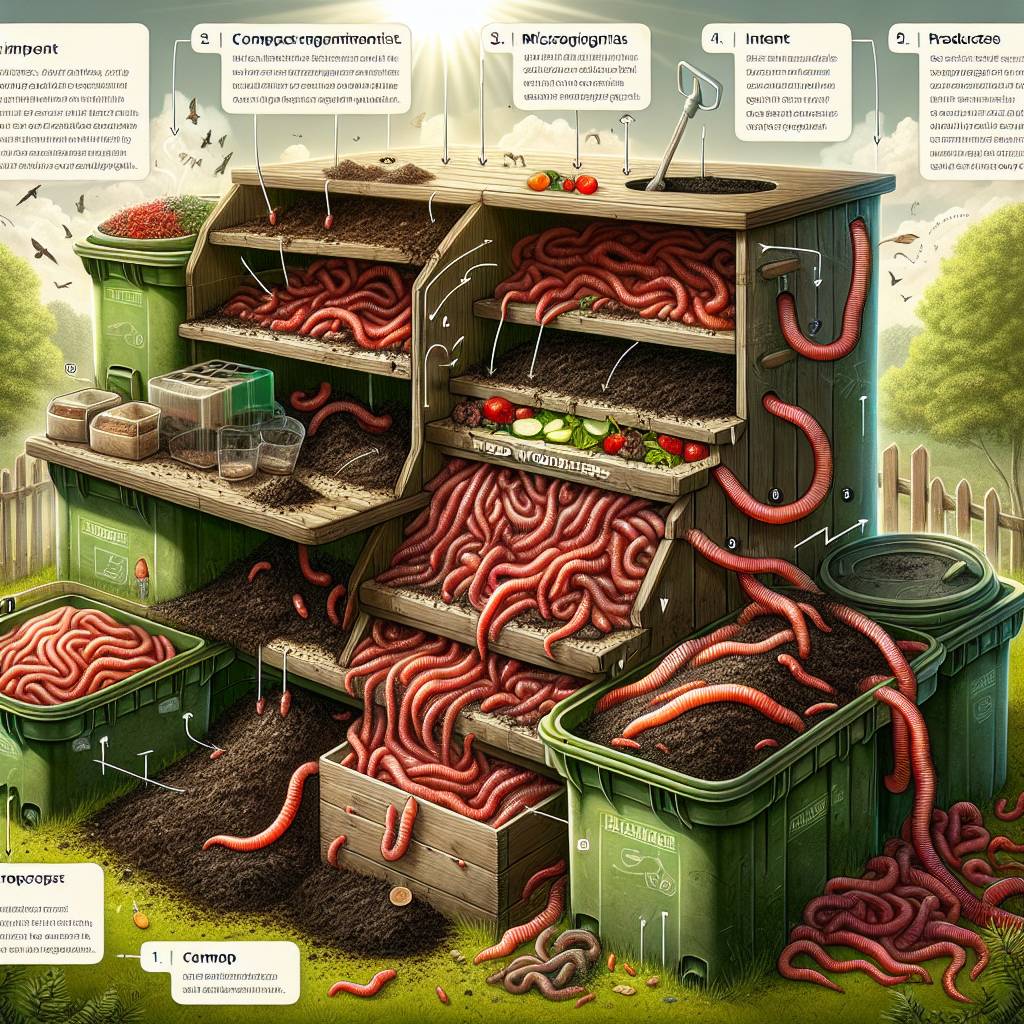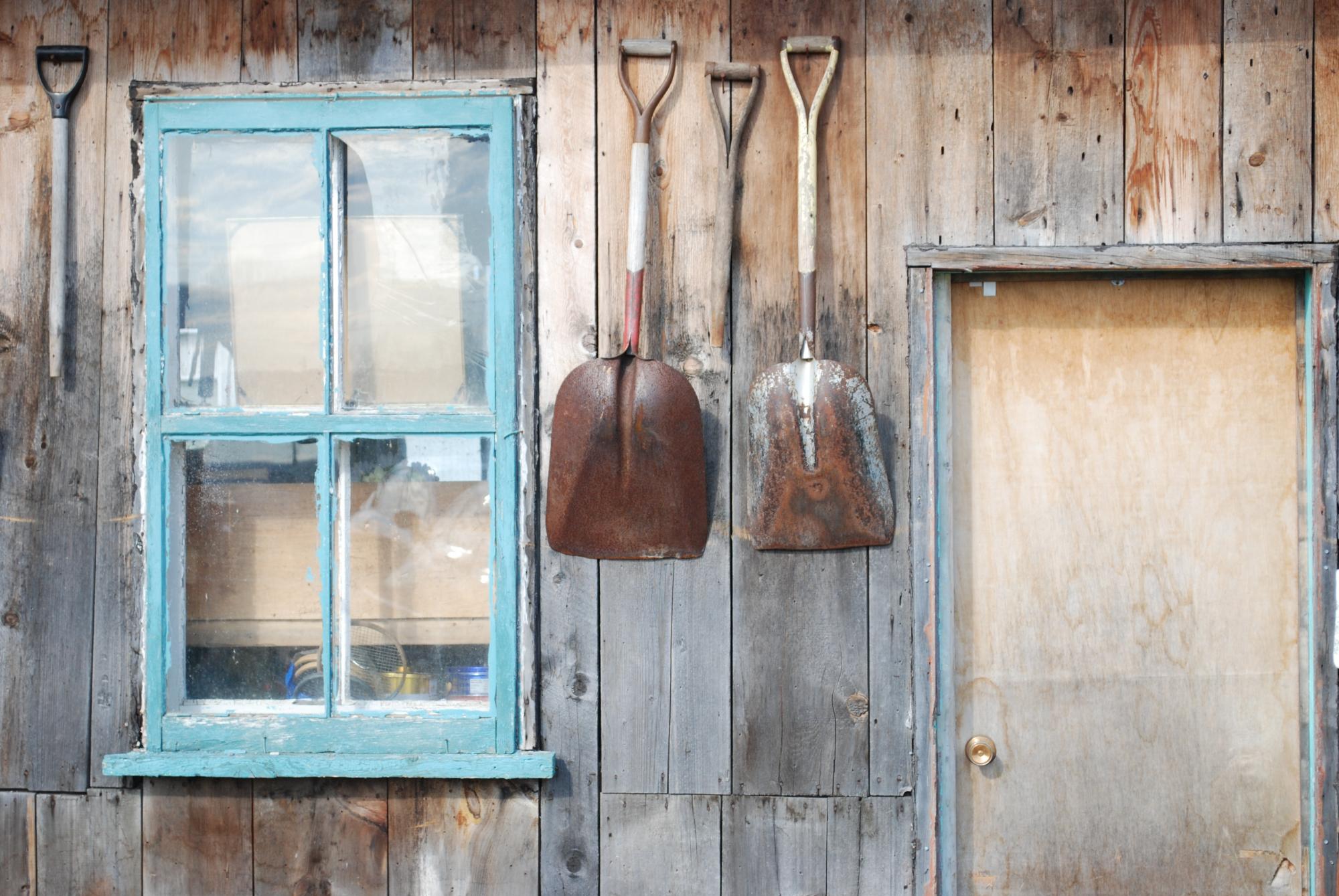Ready to take your composting game to the next level? Enter vermicomposting: the art of using worms to supercharge your compost. While traditional composting is effective, vermicomposting kicks it up a notch by harnessing the power of earthworms. These little wrigglers work wonders in breaking down organic matter into nutrient-rich fertilizer, creating an unparalleled soil amendment that’s teeming with microbial activity. Not only does vermicomposting reduce waste and benefit the environment, but it also produces a superior end product compared to conventional methods. So, if you’re seeking a sustainable and efficient way to enrich your garden or nourish your plants with food, baby worms, vermicomposting might just be your new best friend.
Key Takeaways
- Vermicomposting is an eco-friendly way to enrich compost with the help of worms, providing a sustainable solution for managing organic waste.
- Start vermicomposting by setting up a suitable environment for the worms, such as a bin with proper bedding and moisture levels, and introducing the worms gradually to their new habitat.
- Effectively vermicompost by maintaining the right balance of food scraps, avoiding overfeeding, and ensuring proper aeration in the composting bedding.
- Care for your worms by monitoring their living conditions, protecting them from extreme temperatures, and providing adequate food and moisture.
- Choose the right foods for vermicomposting, such as fruit and vegetable scraps, while avoiding items like meat, dairy, and oily foods that can disrupt the composting process.
- Manage composting bedding moisture by regularly checking and adjusting the moisture levels to create an optimal environment for the worms to thrive.
Vermicomposting Basics and Benefits
Natural Waste Breakdown
Vermicomposting, also known as worm composting, is a natural process that utilizes worms to break down organic waste. This method involves the use of specific species of earthworms, such as red wigglers or red worms, which consume organic materials and transform them into nutrient-rich compost. These worms feed on kitchen scraps like fruit and vegetable peels, coffee grounds, eggshells, garden waste, and food.
The worms’ digestive system breaks down the food they consume into a rich soil amendment known as vermicompost. This process not only reduces the amount of organic waste ending up in landfills but also creates a valuable resource for enriching soil health with backyard compost.
Environmental Benefits
One of the key benefits of vermicomposting is its contribution to reducing landfill waste. By diverting organic materials from landfills, where they would decompose anaerobically (without oxygen) and produce methane gas – a potent greenhouse gas – vermicomposting helps mitigate environmental impacts associated with traditional waste disposal methods.
Moreover, vermicomposting enables individuals to actively participate in recycling efforts by repurposing their kitchen scraps and garden waste into nutrient-rich compost for plants. The resulting vermicompost, often referred to as “black gold,” contains essential plant nutrients like nitrogen, phosphorus, potassium, calcium, magnesium along with beneficial microbes that support healthy plant growth.
Environmental-Friendly Recycling Method
Vermicomposting offers an environmentally-friendly way to recycle kitchen scraps and garden waste while simultaneously creating a valuable resource for gardening or farming activities. It provides an opportunity for individuals living in urban areas without access to traditional outdoor composting systems to engage in sustainable practices by utilizing small-scale indoor vermiculture setups.
Furthermore,vermicompost can be used as both potting mix or added directly to garden soils for enhancing fertility. In addition to improving soil structure and water retention capacity due to its high humus content, compost aids in suppressing plant diseases through promoting balanced microbial activity within the soil ecosystem.
Getting Started with Vermicomposting
Choosing a Suitable Container
When starting vermicomposting, the first step is to choose a suitable container. This can be a plastic container or wooden box. The key is to ensure that whatever compost you choose, it has enough space for the worms to move around and do their work. A popular option is a plastic storage bin with a lid, as it provides ample room and allows for easy maintenance.
Once the container is selected, the next crucial step is to line its bottom with moistened bedding material such as shredded newspaper or cardboard. This serves as the initial bedding for the worms and creates an environment conducive to their activity with compost.
Introducing Red Worms (Eisenia fetida)
After preparing the container with suitable bedding material and compost, it’s time to introduce red worms, specifically Eisenia fetida, into the bin. These worms are highly efficient at breaking down organic matter and are commonly used in vermicomposting due to their voracious appetite for decaying materials.
The introduction of these worms marks the beginning of the vermicomposting process within your chosen container. As they settle into their new home and begin consuming organic waste, they will gradually transform this waste into nutrient-rich vermicompost, which can then be used to enhance plant growth in gardens or potted plants.
How to Vermicompost Effectively
Ideal Temperature Range
Maintain the ideal temperature range of 55-77°F (13-25°C) to ensure optimal worm activity in compost. Worms are most productive within this temperature range, and extreme temperatures can be harmful to them. If it gets too cold, worms may become inactive or die, while excessive heat can cause them stress and reduce their composting efficiency.
It’s crucial to place the vermicomposting bin in a location that remains within this temperature range. For example, a garage or basement could provide suitable conditions for compost. During colder months, using a heating pad designed for vermicomposting bins can help maintain the necessary warmth for the worms.
Proper Aeration
Ensure proper aeration by regularly fluffing the bedding material to prevent compaction. Compacted bedding restricts airflow and makes it difficult for worms to move around and do their job effectively. By gently turning over the compost bedding material with a hand tool like a small garden fork or trowel, you can create air pockets that allow oxygen to reach the worms.
In addition to physically aerating the bedding material, adding items like shredded newspaper or cardboard as bulking agents can also help maintain proper airflow in the worm bin. These materials naturally create air channels as they break down, improving overall ventilation in the bin.
Monitoring Moisture Levels
Regularly monitor moisture levels in the worm bin and adjust as needed to avoid excess dryness or sogginess. The bedding, similar to compost, should have a consistency similar to that of a wrung-out sponge – moist but not dripping wet. If it becomes too dry, misting with water will help restore adequate moisture levels without drowning or disturbing the worms.
Conversely, if moisture levels are too high due to factors such as overfeeding or inadequate drainage at the bottom of your bin, adding dry carbon-rich materials like shredded paper or leaves can absorb excess moisture and balance out humidity levels within your vermicompost system.
Caring for Your Worms in Vermicomposting
Shady Shelter
Keep your worm bin in a shady area to protect the worms from extreme temperatures. This is crucial because worms thrive best in stable, moderate conditions. Extreme heat or cold can be detrimental to their well-being. Imagine how uncomfortable it would be for you if you were exposed to scorching sunlight all day long without any shade.
It’s important to provide a sheltered environment that shields the worms from harsh weather conditions. Just like us, they need protection from the elements so they can happily carry out their essential work of breaking down organic matter into nutrient-rich compost.
Avoid Harmful Substances
Avoid using chemicals or pesticides near the worm bin as they can harm the worms. These tiny creatures are highly sensitive and susceptible to synthetic substances commonly found in chemical products used around homes and gardens.
When these harmful chemicals seep into the environment where the worms reside, they can disrupt their natural habitat and even cause severe harm or death. It’s akin to living next door to a factory emitting toxic fumes; it would undoubtedly have adverse effects on your health over time.
Ensuring that your vermicomposting setup remains free from such hazardous materials is vital for maintaining a safe and healthy living space for these hardworking little creatures.
Balanced Diet
Provide a balanced diet for your worms by feeding them a variety of organic materials. Just like humans, worms need diverse nutrients to stay healthy and productive. Their diet should consist of various food scraps such as fruit peels, vegetable trimmings, coffee grounds, and crushed eggshells.
Avoiding Overfeeding in Vermicomposting
Feed Regularly
Feed your worms small amounts of food regularly. This helps maintain a balanced environment for the worms to thrive. By feeding them small quantities at regular intervals, you prevent overwhelming their living space.
Overfeeding can lead to an imbalance in the vermicomposting system and result in unpleasant odors.
Monitoring Consumption
Pay attention to how quickly the worms consume their food. If you notice that they are not finishing the food within a reasonable time frame, it’s an indication that you should reduce the amount being fed.
Adjusting feeding habits based on consumption patterns is crucial for maintaining a healthy vermicomposting environment.
Choosing the Right Foods for Vermicomposting
Optimal Foods for Worms
Selecting the right foods is crucial. Vegetable scraps, fruit peels, coffee grounds, tea leaves, and crushed eggshells are ideal choices. These items are rich in nutrients and breakdown easily.
These food scraps provide the essential nutrients that worms need to thrive and produce high-quality compost. By feeding them with these nutrient-rich materials, you ensure that they can efficiently convert the organic matter into valuable soil enhancers.
Preparing Food Scraps for Worm Consumption
To facilitate efficient consumption by the worms, it’s important to prepare the food scraps properly. Chop or blend the vegetable and fruit peels into smaller pieces before adding them to your vermicompost bin. This makes it easier for the worms to consume and accelerates decomposition.
Managing Composting Bedding Moisture
Maintaining Proper Moisture Levels
To ensure the success of vermicomposting, it’s crucial to maintain the right moisture levels in the worm bin. If the bedding feels too dry, a gentle misting with water can help restore the necessary dampness. This will create an environment that is conducive for the worms and their composting activities.
Excess moisture should be avoided as it can lead to anaerobic conditions and unpleasant odors. To prevent this, any accumulated liquid at the bottom of the bin should be drained periodically. By doing so, you’re creating an environment that supports aerobic decomposition and healthy worm activity.
Checking Bedding Dampness
The bedding material within your vermicomposting system should ideally feel like a wrung-out sponge – damp but not dripping wet. This level of moisture provides a comfortable habitat for the worms while allowing them to efficiently break down organic matter into nutrient-rich compost.
When adding new bedding or adjusting existing materials, always keep in mind this ideal dampness level. It’s essential for maintaining optimal conditions within your worm bin and ensuring that they remain productive in converting kitchen scraps, Backyard Compost, and other organic waste into valuable soil amendment.
Harvesting Worm Castings Correctly
Separating the Worms
Harvesting worm castings correctly is crucial. After the composting process, you need to separate the worms from the finished compost. One method involves using light exposure or migration. By placing a bright light over one side of the bin, you can encourage the worms to move away from it and towards the other side.
Another way is to allow the worms to naturally migrate within their bedding. You can create an environment where food and moisture are concentrated on one side of the bin while leaving only castings on another side. This encourages most of your worms to move toward their preferred conditions, making it easier for you to collect their valuable castings.
Removing Castings
Once you have successfully separated most of your worms from their castings, carefully remove these nutrient-rich materials without disturbing any remaining creatures in your vermicomposting system. Use a fine mesh screen with small holes that will allow worm castings but not adult worms or cocoons through.
You can also hand-pick any remaining worms from the harvested compost if necessary. Take your time during this step as ensuring that no live worms remain in your collected worm castings is essential before using them in gardens or potted plants.
Utilizing Compost from Vermicomposting Efficiently
Enhancing Plant Growth
Mixing worm castings with potting soil for houseplants or seed starting can significantly enhance plant growth. The rich nutrients in the vermicompost provide an excellent boost for the plants, promoting healthy development and vitality. When you incorporate vermicompost into the potting soil, it acts as a natural fertilizer, delivering essential minerals and microorganisms that are beneficial for the plants’ overall well-being.
Furthermore, applying vermicompost as a top dressing around garden plants offers multiple benefits. Not only does it supply vital nutrients to the plants, but it also helps improve the soil structure. By adding a thin layer of vermicompost on top of your garden soil, you create an ideal environment for root growth and water retention. This practice fosters healthier and more robust plants while simultaneously enhancing the quality of your garden’s soil.
Liquid Fertilizer Production
Brewing vermicompost tea is another effective method to utilize compost from vermicomposting efficiently. By steeping worm castings in water, you create a nutrient-rich liquid fertilizer known as vermicompost tea. This organic solution serves as an exceptional source of nourishment for your plants when used during watering sessions.
Vermicompost tea provides a convenient way to deliver essential nutrients directly to plant roots while also enriching the surrounding soil with beneficial microorganisms. As this liquid fertilizer is easily absorbed by both roots and leaves, it effectively promotes vigorous plant growth without causing any harm to delicate foliage or flowers.
Final Remarks
Congratulations! You’ve now mastered the art of vermicomposting. By following the techniques and tips outlined in this guide, you’re well on your way to creating nutrient-rich compost for your garden while reducing waste. Remember to keep an eye on your worm buddies, maintain proper moisture levels, and feed them a balanced diet. With patience and dedication, you’ll soon be reaping the rewards of your sustainable efforts in the form of healthy soil and thriving plants.
Now, go forth and let your worms work their magic! Share your newfound vermicomposting knowledge with friends and family. Encourage them to join you in making a positive impact on the environment. Together, we can all play a part in creating a greener, more sustainable world.
Frequently Asked Questions
How do worms enhance the composting process in vermicomposting?
Worms break down organic matter into nutrient-rich castings, improving soil structure and fertility. Their activities aerate the compost, speeding up decomposition and producing high-quality fertilizer for plants.
What foods should be avoided when vermicomposting?
Avoid feeding your worms dairy products, oily foods, meat, and acidic or spicy items. These can disrupt the worm bin’s balance, cause odors, attract pests, or harm the worm population.
How can I effectively manage moisture in my vermicomposting bedding?
Maintain proper moisture levels by regularly checking and adjusting bedding dampness. Use a spray bottle to lightly mist dry spots while adding dry bedding materials if it becomes too wet.
When is the right time to harvest worm castings for use in gardening?
Harvest worm castings when they are dark brown and crumbly with an earthy smell. Typically after 3-6 months of active vermicomposting, you can collect these nutrient-dense castings for application in gardens or potted plants.
Can I use vermicompost directly on my garden plants without any additional processing?
Yes! Vermicompost is gentle enough to apply directly onto your garden beds as a top dressing or mixed into potting soil for indoor plants. It provides slow-release nutrients that benefit plant growth without risk of burning roots like chemical fertilizers might.






